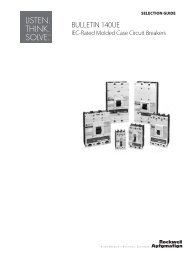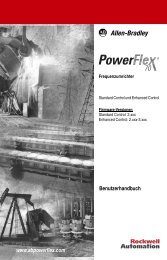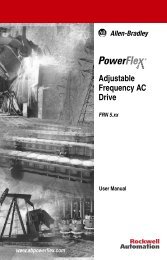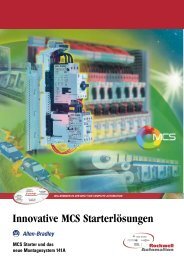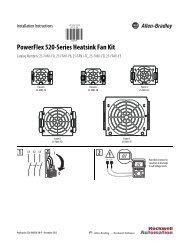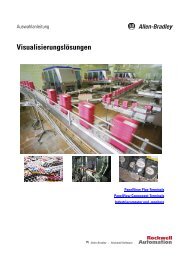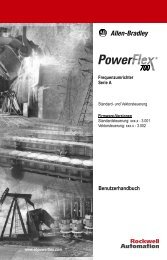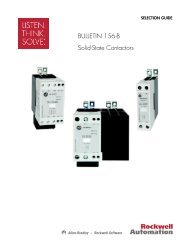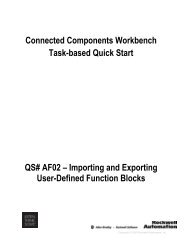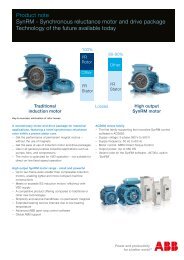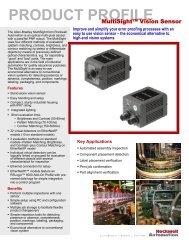Temperature Controller - Staveb AG
Temperature Controller - Staveb AG
Temperature Controller - Staveb AG
- No tags were found...
You also want an ePaper? Increase the reach of your titles
YUMPU automatically turns print PDFs into web optimized ePapers that Google loves.
D-2 GlossaryContact Output: Relay control outputs are often available in these contactforms:• Form A Contact (SPST-NO): Single-pole, single-throw relays use thenormally open and common contacts to switch power. The contactsclose when the relay coil is energized and open when power is removedfrom the coil.• Form B Contact (SPST-NC): Single-pole, single-throw relays use thenormally closed and common contacts. These contacts open when therelay coil is energized and close when power is removed from the coil.• Form C Contact (SPDT): Single-pole, double-throw relays use thenormally open, normally closed, and common contacts. The relay canbe wired as a Form A or Form B contact.Control Action: The control output response relative to the differencebetween the process variable and the set point. For reverse action (usuallyheating), as the process decreases below the set point, the output increases. Fordirect action (usually cooling), as the process increases above the set point, theoutput increases.Control Mode: The type of control action used by the controller can includeON/OFF, time-proportioning, PD, and PID. Other combinations andrefinements are used.CSA: Canadian Standards Association is an independent testing laboratorythat establishes commercial and industrial standards, as well as tests productsand certifies them.C-UL: This symbol appearing in literature and marked on products indicatesCanadian recognition of Underwriters Laboratories, Inc. approval of particularproduct classes. The C-UL approval may stand in place of Canadian StandardsAssociation certification. All references to C-UL are based on prior listing orrecognition from the original UL file.Dead Band: The time period in a control system between a change in stimuliand any measurable response in the controlled variable. In the deadband,specific conditions can be placed on control output actions. Operators selectthe dead band width. It is usually above the heating proportional band andbelow the cooling proportional band.Derivative: The rate of change in a process variable which forms the “D” in aPID control algorithm. This control action anticipates the rate of change ofthe process and compensates to minimize overshoot and undershoot.Derivative control is an instantaneous change of the control output in thesame direction as the proportional error. This is caused by a change in theprocess variable (PV) that decreases over the derivative time.Publication 900-UM003C-EN-E - January 2004



